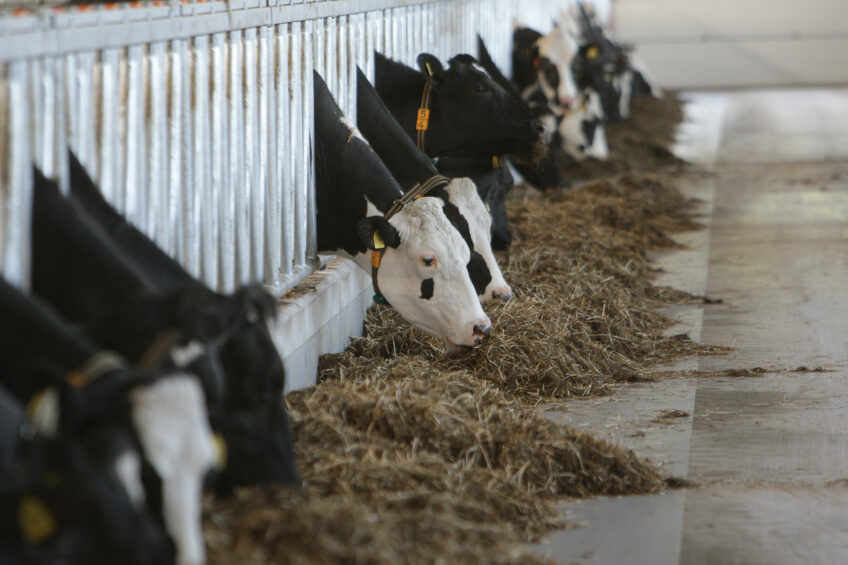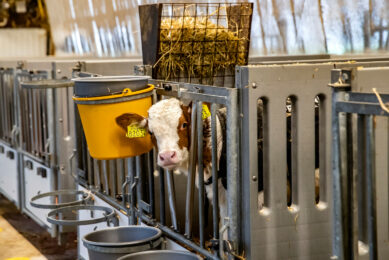Foetal programming: Large impact for your dairy herd

Recent research has demonstrated that plane of nutrition during gestation can influence the performance and health of the calf and potentially her performance as a lactating cow.
The performance of dairy cows that are being milked today is partially a consequence of their dam’s nutrition during pregnancy. The term that we use is “Legacy Effect”, which means that today’s decisions influence future production.
Many factors may impact the developing foetus
Foetal programming relates to the concept/idea that a maternal stimulus or insult during a critical period of in utero growth can have long term effects on the offspring (Funston et al, 2010). Much of the ruminant research has been conducted on beef and sheep but the concepts can be transferable to dairy cattle. In modern dairy production, there are many situations where nutrient supply or stressors may impact the developing foetus. Factors such as over-crowding, lameness, nutrient excess of deficiencies during the dry cow period, twinning, heat stress and mastitis. Maternal insult or stimulus through nutrition or other factors such as heat stress, can illicit different outcomes depending on when this occurred during gestation – the 1st, 2nd or 3rd trimester. Because the nutrient demands during the 1st trimester are low, the historical assumption has been that nutrient supply has very little impact on the developing foetus. Plus, the placenta plays a major role in the regulation of foetal growth during this period.

Glucose sparing effect of pregnancy
Data from beef and sheep studies that examined nutrient restriction during the 1st trimester show a reduction in plasma concentrations of major regulators of glucose homeostasis such as cortisol, thyroid hormones, and insulin (Symonds et al., 2010). This mechanism, known as the glucose sparing effect of pregnancy, allowed the animal to maintain glucose levels for the foetus to maintain consistent foetal growth. However, the endocrine sensitivities of a large number of foetal organs are essentially reset. (Effect of Maternal Nutrition on Calf Health and Growth, Jon Schoonmaker). A study by Long et al. (2012) reported that a 30% nutrient restriction during early gestation in cattle did not affect birth, weaning, or yearling slaughter weights, however fat cell size was increased and muscle size was decreased at slaughter after 1 year of age.
What is the potential impact of this research on dairy cattle?
Because of the potential for reduced insulin sensitivity and increased fat deposition, foetal programming could influence the ability of the dairy cow to mobilise and metabolise body fat. Excessive adipose mobilisation during periods of reduced liver function has been linked with metabolic disorders such as fatty liver syndrome and ketosis. Beef heifer progeny from protein supplemented dams on pasture showed increased pre-breeding body weight, body weight at pregnancy diagnosis and improved pregnancy rates (Martin et al., 2007). Similarly, Funston et al. (2010b) report higher weaning body weight, decreased age at puberty and a trend for higher pregnancy rates in heifers from supplemented dams. Underwood et al. (2010) also demonstrated beneficial foetal programming effects using pasture-fed beef animals. Pregnant beef heifers were switched from a poor winter pasture to an improved pasture during days 120-150 of gestation (2nd trimester). The steer calves that were born from both groups were managed and fed the same. However, the steers born from dams that were fed the improved pasture had increased weaning weight, ADG during the finishing period and body weight at slaughter.
Can heat stress be a negative stimulus during late gestation (3rd trimester)?
A number of studies demonstrate that calves born to cows exposed to heat stress during the dry period (3rd trimester) have lower birth weight (Collier et al., 1982; Tao et al., 2012), weaning weight, and compromised passive immune transfer. Further studies have examined the long-term effects on the calf. A recent analysis of historical data by Monteiro, Tao, Thompson, and Dahl (University of Florida) demonstrated that in utero heat stress decreased calf survival and performance through the first lactation. Animal data was obtained from 5 previous experiments conducted during 5 consecutive summers and were pooled and analysed. The experiments took place at the Dairy Unit of the University of Florida (Hague) during the period of 2007 to 2011. The data demonstrated that the in utero heat stressed heifers produced 5.1 kg/day less milk to 35 weeks of the 1st lactation compared with cooled heifers. The researchers concluded that this is likely explained by differences in mammary gland development and altered metabolic efficiency because of changes in the metabolism of those calves that experienced heat stress in utero. The last example is based on historical data from a large Spanish data-set (Gonzalez-Recio et al. 2012) that examined the effect of dam parity on milk yield of the offspring. The data concluded that “heifers from heifers” produced more milk and had improved longevity as compared to “heifers from mature animals”. There are currently no data to explain these differences but it is thought that foetal programming may play a role. In most situations, the growing heifer is under less nutritional and physiological stress than the lactating animal.
So in conclusion: The impact of foetal programming is long-term and can have an major impact on the dairy herd’s future production.
Join 13,000+ subscribers
Subscribe to our newsletter to stay updated about all the need-to-know content in the dairy sector, two times a week.










